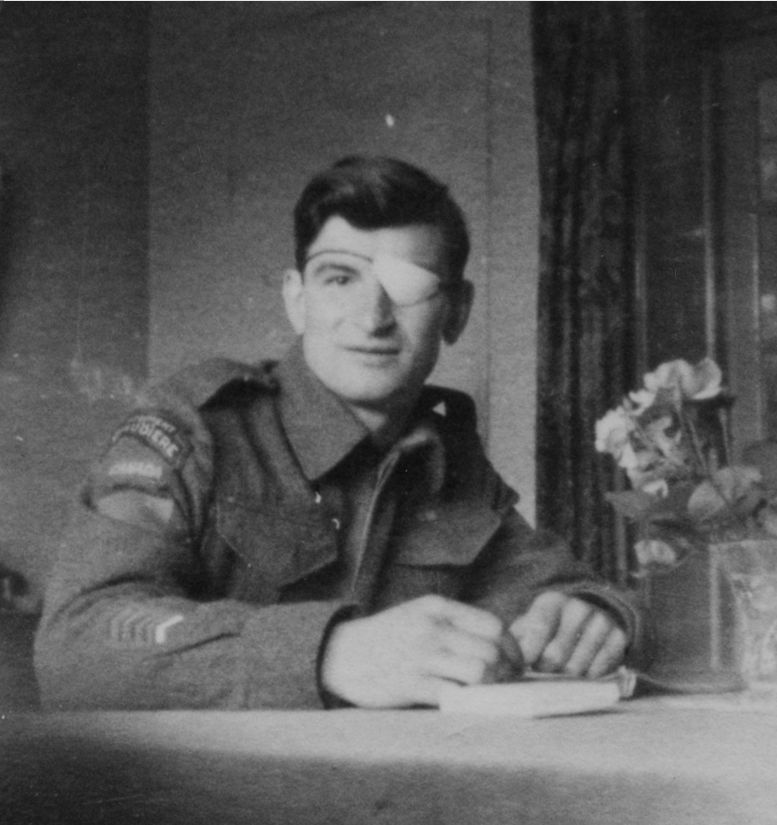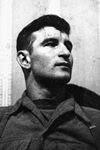Along the Terrible Trail that Led to Wewak
The War Illustrated, Volume 9, No. 210, Page 136, July 6, 1945.
Last Japanese-held port on the mainland of British New Guinea, Wewak fell to the 6th Australian Division on May 19, 1945. Two-thirds of the 30,000 enemy troops defending it perished. The remainder had but one escape route to the west - along the disease-ridden Sepik River. The Allied path to victory is specially described for "The War Illustrated" by ROY MACARTNEY.
New Guinea is liberally besprinkled with sleepy mission towns and tiny trading ports which sprang overnight into the headlines when engulfed by the Japanese drive of 1942. One by one they have returned to the keeping of Australia, each with its mangled planes, bomb-blasted stores, rusting hulks, shattered bungalows and splintered palms as record of the swift rise and decline of Japan in the fluctuating fortunes of the Pacific War.
Wewak, formerly administrative centre of the Sepik River district, is such a town. Standing on a raised headland, it boasts perhaps a dozen buildings. Its narrow bay provides a rather poor shelter for sea-going craft, a large coral reef near the shore nullifying what few natural advantages it possesses. Prospectors before the war discovered rich alluvial gold at Maprik, 45 miles westwards from Wewak in the rugged Torricelli Mountains, and the sleepy little port was the main supply base for the goldfields. Copra was practically the only other commercial interest, neat coconut plantations flanking numerous missions along the flat coastal plain. There were several Iraces of oil found in the Sepik area, but although many bores were put down it was not located in any paying quantities.
Following their conquest in 1942, the Japanese quickly turned Wewak into their major air base on the northern New Guinea littoral. They enlarged the existing field at Wewak, constructed another at Boram, five miles to the south-east, and hacked two more out of the jungle at But, 27 miles, and Dagua 20 miles to the north-west.
Wewak was a busy base, lying as it did in the lifeline of airfields the Japanese constructed to their outposts at Rabaul and Salamaua. From its fields large numbers of bombers took off daily to hammer the last Allied toeholds in New Guinea at Port Moresby and Milne Bay, but Japan's early aerial superiority quickly slipped from her hands and by August 1943 the scales were ready to tip in favour of the Allies.
Mighty Punch to be Delivered
Australian and American aircraft by that time were operating from bases as far north as Dobadura, outside Buna, but Wewak was still out of their fighter range. While heavy bombers maintained a sporadic bombardment of the base, American engineers prepared a surprise knock-out blow for the once omnipotent Japanese New Guinea air force. They were secretly flown into a small flat at Tsili Tsili, in the upper Watut Valley, beyond Wau, early in June 1943. By mid-August they had completed a formidable fighter base, and the Fifth Air Force was ready to deliver its mighty punch.
Early on the morning of August 16, 100 Mitchells, escorted by the same number of Lightnings, skimmed in low over the coconut palms at Wewak and took the Japanese completely by surprise. They had no fighters in the air, Ack-Ack guns were not manned, and at Boram 60 enemy bombers and fighters were lined up ready for a raid on one of our bases. Within the space of a few minutes Allied planes had accounted for nearly 170 grounded enemy planes and added another word to their vocabulary. Thereafter, to “Wewak” an objective was to blast it out of existence.
By January 1944 Wewak was well within the field of land operations as Australians drove along the northern coast beyond Finschhafen and the Americans broke clear of the Vitiaz straits with landings on New Britain and in the Admiralties.
It was clear the Japanese expected the next Allies amphibious blow to fall upon Wewak. With what small craft they could still smuggle through, they rushed reinforcements to the area; and at the same time withdrew to strongly prepared positions behind the Sepik what remained of the formations the Australians had mauled on the Huon Peninsula.
When General MacArthur struck, he bypassed Wewak, landing instead at Hollandia and Aitape, 100 miles to the west; within 24 hours of the American seizure of Aitape, Australian engineers had whipped the nearby strip of Tadji into operational condition and Australian fighters were patrolling the sky over the vitally important objective of Hollandia.
Aitaoe fitted into the American strategy only as a staging point along the road to the Philippines and Tokyo, and as with all such bases General MacArthur was content to build up a perimeter defence to cover the airfields and leave the by-passed Japanese to their own ends. Despite the constant pounding given them by Australian Beaufighters and Beauforts operating from the Tadji strip, by July the Japanese had been able to move up sufficient men and material from Wewak under cover of darkness to stage what the Americans describe as a “reaction”.
They furiously counter-attacked the eastern approaches of the 20 mile perimeter held by two American divisions with the support of an attached Cavalry Regiment. Savage hand-to-hand fighting went on for days, the fanatical Japanese discounting the losses they suffered at the hands of the Americans and from low-flying Australian bombers.
Late last year the American divisions were wanted for the Philippines operation, and the 6th Australian Division relieved the American force, which was twice its size. Its role was not just to hold the airfield but to drive a hundred miles down the coast to Wewak and liquidate the Japanese still remaining in the area.
Australian Intelligence successfully contrived to convince the numerically superior Japanese that they were opposed not only by the 6th Australian Division but also by an additional full division. Small as was the Australian force detailed for the operation, its prowess and battle experience were in marked inverse proportion to its size. Of all Australian Divisions, the 6th is perhaps the most famous. Formed in 1939, it was composed of the first Australian volunteers in this war. It opened its account with the storming of Bardia and Tobruk, followed with the gallant struggles of Greece, Crete and Syria, and, returning to the Pacific, spearheaded the drive across the Kokada trail, and other arduous early New Guinea campaigns.
Early spectacular results were not possible when the Australians took over last November. First, it was necessary to stern the steady stream of Japanese who were bypassing Aitape to the south through the Torricelli Mountains and making their way westward. Veterans of the 17th Brigade drove inland into the razor-edged mountains. Struggling over terrible terrain, they hacked and wended their way over a series of heart-breaking ridges, closing one escape track after another in the face of sporadic but desperate Japanese resistance. When they captured Maprik, former gold centre, their arduous task was completed.
Meanwhile, the 16th Brigade had driven forward from the holding line the Americans had established east of Aitape and were rolling up the Japanese along the flat, swampy coastal strip leading to Wewak. The numerically superior enemy stubbornly contested every yard of the way, sowing numerous mines and taking every advantage of the terrain. Between Aitape and Wewak, Australian engineers constructed no less than 80 bridges: a grand achievement.
Eighty miles lay behind the Australians early in April 1945 when they increased the tempo of their advance and took But and Dagua airfields at the point of the bayonet in irresistible charges. The fresh 19th Brigade, which early in the war had marched and fought 29 miles in the opening day of the break-through inside the Tobruk perimeter, took the ball from the feet of the 16th Brigade.
H.M.S. Newfoundland, H.M.A.S. Hobart, supporting destroyers and Australian and American bombers, delivered a tremendous bombardment to pave the way for the final assault late in May. Headed by tanks the 19th swept across the base of the Wewak peninsula, then moved in to stamp out the 800 Japanese who had remained to make a last stand. Using flame-throwers, explosives and grenades, they liquidated the enemy one by one in their foxholes, caves and tunnels. Where the caves were too deep for the flame-throwers to reach the fanatical defenders the Australians sealed the entrances with dynamite, thus entombing them.
An amphibious force landed ten miles east of Wewak, astride the main track leading to the Sepik escape route; and when it linked up with the main Australian force moving along the coast the rout of the enemy was complete. With Australians hot in pursuit, the shattered Japanese remnants were fleeing into the forbidding Torricellis.
So ends the story of Wewak, so costly for Japan. The fate of the luckless survivors of the garrison is certain. They will probably try to make their way up the terrible Sepik to the no more hospitable territory of Dutch New Guinea. Divorced from their last supply dumps they will have to live off the country, which will mean death by starvation for many of them.
Index
Previous article
With Our Navies Today
It has taken three months to conquer the island of Okinawa, in spite of the fact that the initial landing after a series of bombardments by the U.S. Fifth Fleet under Admiral Spruance met with only
Next article
Men of Destiny Who Govern Occupied Germany
At Marshal Zhukov's headquarters on the outskirts of Berlin on June 5, 1945, there was signed by the four Allied commanders-in-chief an historic agreement for the future government of every phase o





